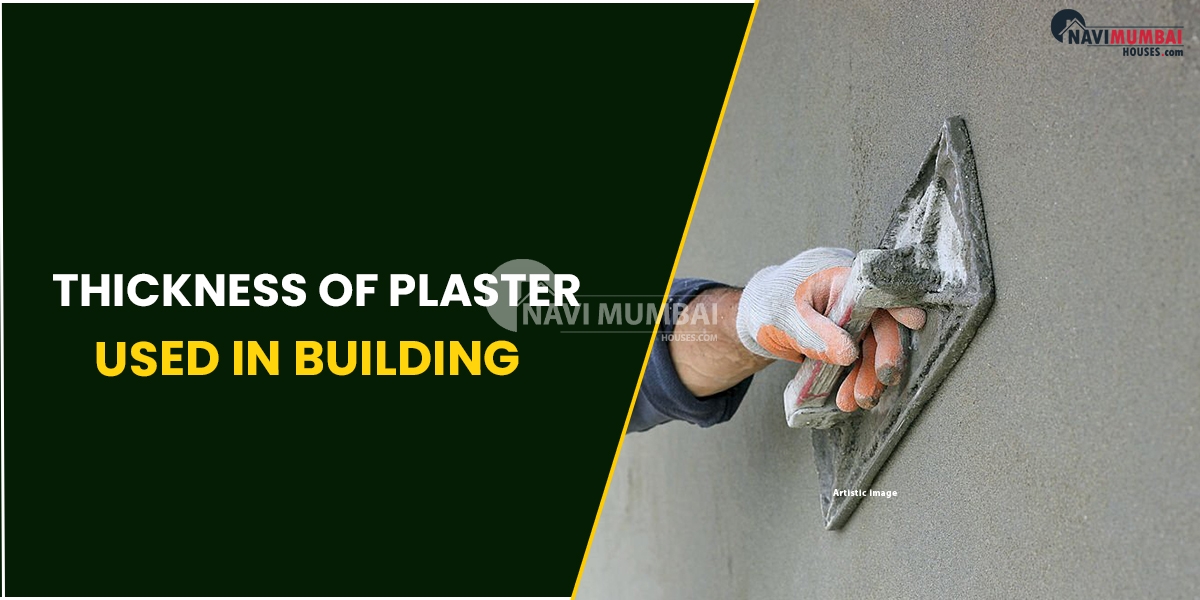
- July 29, 2023
- News
Thickness Of Plaster Used In Building
Thickness Of Plaster : Every step in the construction process requires plastering. You must understand the fundamentals of an appropriate plastering thickness for a flawless finish and the longevity of the property. You as the buyer can have concerns about the plaster’s thickness. The recommended plastering thickness for interior and exterior walls is provided by navimumbaihouses.com.
The first phase in every building project is plaster. You can only achieve the greatest plaster results by understanding cement, mortar, thickness, and application quality. But first, explain to us what plastering is. Gypsum, lime, or cement mixed with water and sand is what makes plaster. It produces a firm paste that may be applied to the walls and roof when combined with water. Enhancing the attractiveness of architectural features like cornices is plaster of paris (POP). POP has been around for a long time. From the world of building to the arts, it has many uses. Give us more information about it in detail:
Are You Searching Flat For Rent In Kharghar?
Factors affecting the thickness of the plaster
The greatest material for protecting a structure and completing interior walls is plaster. The application’s thickness, durability, and setting time are its three key characteristics. The beautiful plaster ceilings of the Elizabethan era in England are a few well-known examples of plaster usage. For the greatest results in building, use the proper plastering thickness and kind.
There are different types of plasters available in the market:
- Gypsum plaster
- Lime plaster
- Cement plaster
- Clay plaster
The surface and cement-to-sand mix ratio are the primary determinants of plastering thickness. In general, heat and rain are more likely to harm a building’s outside surface.
According to experts, the plastering thickness for brick walls can range from 12 mm to 15 mm to 20 mm. The plain face of brick masonry is plastered with cement plaster that is 12 mm thick. On the rough side of 13.5, 9, and 4.5 brick walls, cement plaster is applied with a thickness of 15 mm at the same time. For aesthetic purposes, 20 mm thick cement plaster is use.
3BHK Flat For Sale In Kharghar
Are you looking for a house for rent in Kharghar? We have semi-furnished, unfurnished, and furnished flats available for rent in various sectors of Kharghar. We have 1 BHK starting at Rs. 10,000 per month, 2 BHK starting at 15,000 per month, and 3 BHK flats for rent in Kharghar starting at 18,00 per month. We can provide you with the list of rental properties in Kharghar, from where you can choose the one which fits your budget and choice.
Plaster thickness on internal and exterior walls
The buyer must be aware of the thickness of the plastering on the house’s exterior and inside for the finest plaster results. The inside surface plaster is typically made up of just one plastering coat. As a result, the interior plastering thickness ranges from 6 to 12 mm. Two applications are necessary to get the desired plastering thickness. Additionally, the outside plaster’s thickness might range from 18 to 20 millimetres.
You’re looking for Buy Home In Navi Mumbai we have the Best Buy Properties In Navi Mumbai Like Ready to Move & Nearby possession: https://navimumbaihouses.com/property/search/buy/navi-mumbai-all/
If you want daily property update details please follow us on Facebook Page / YouTube Channel / Twitter



